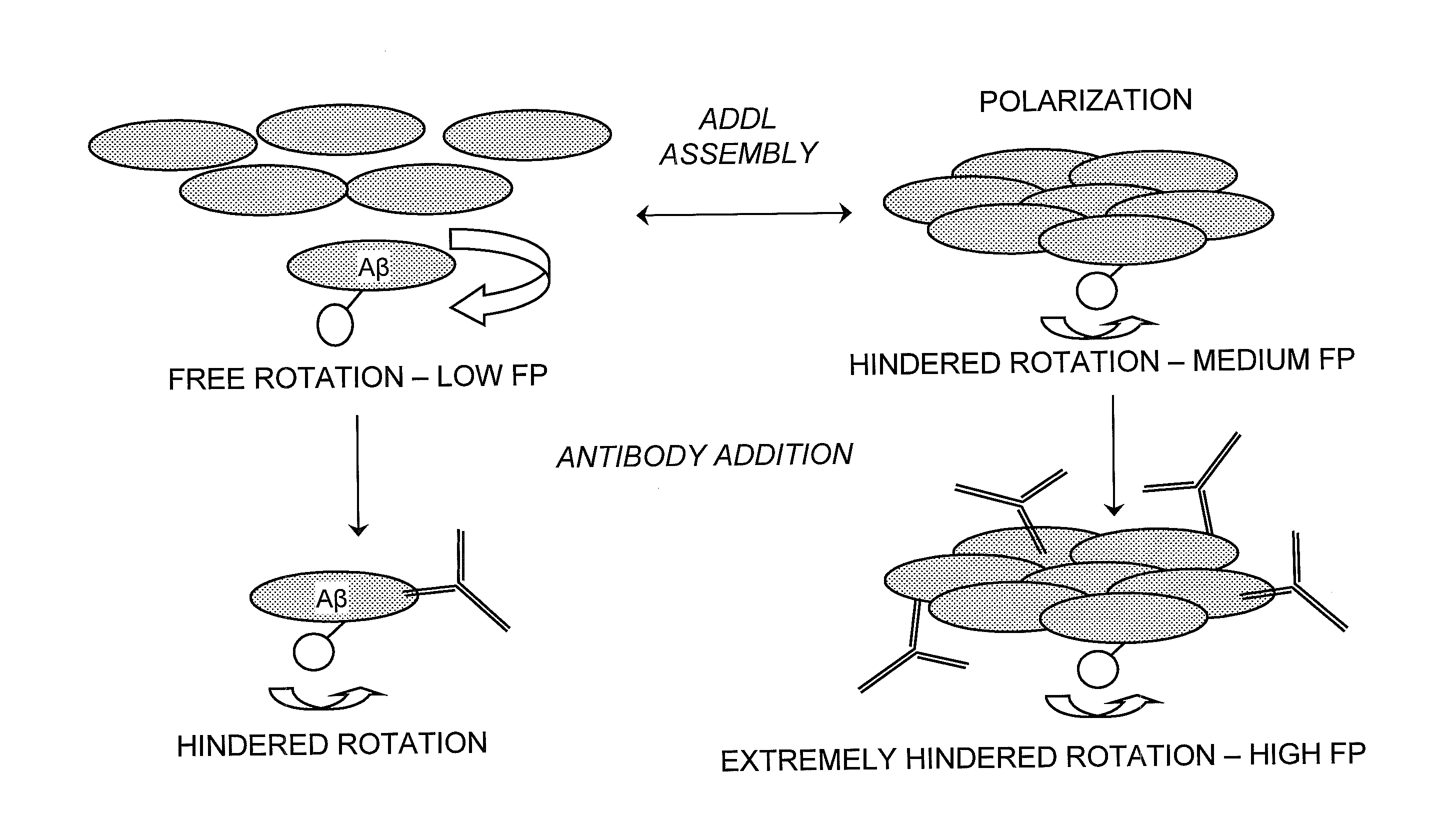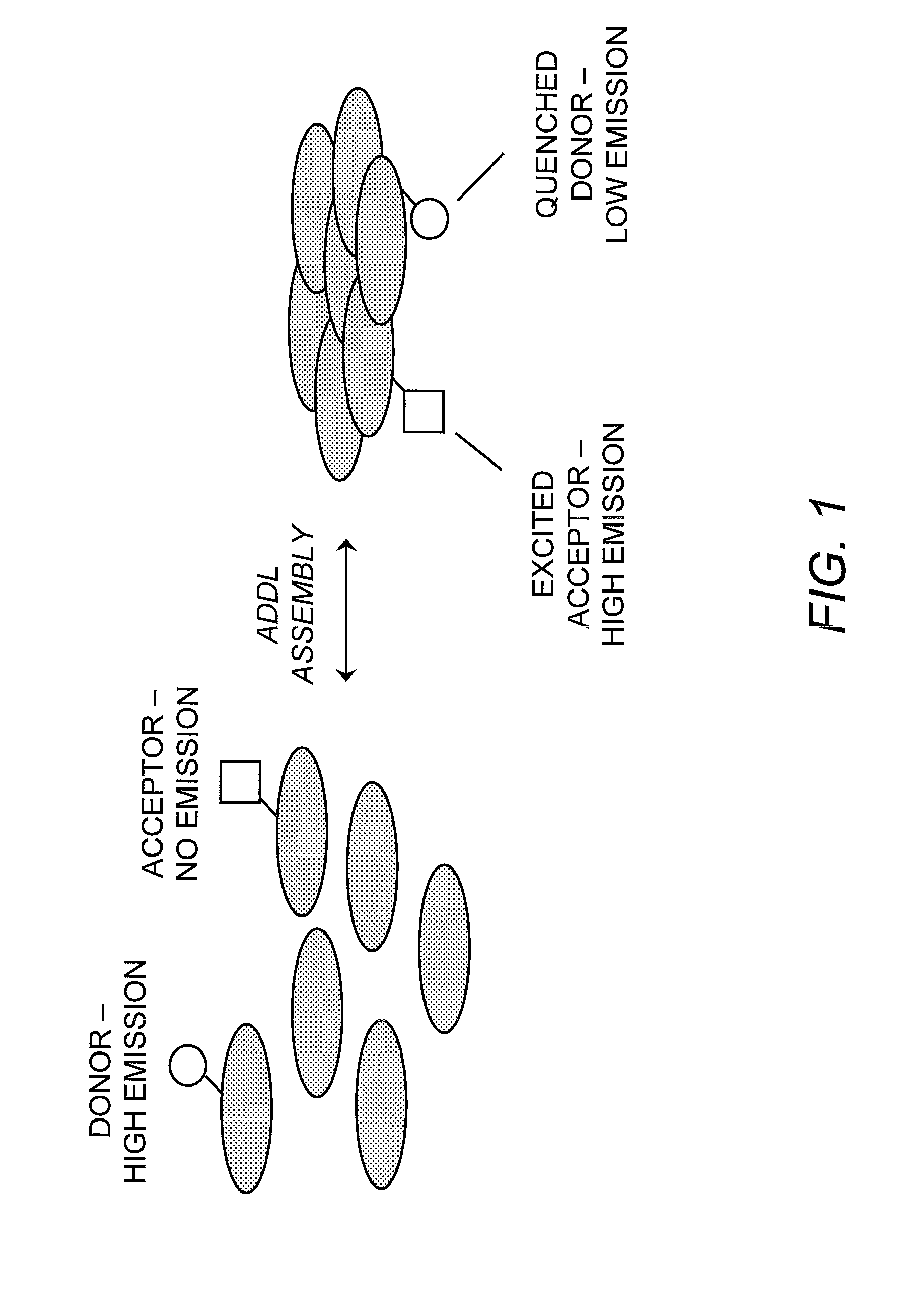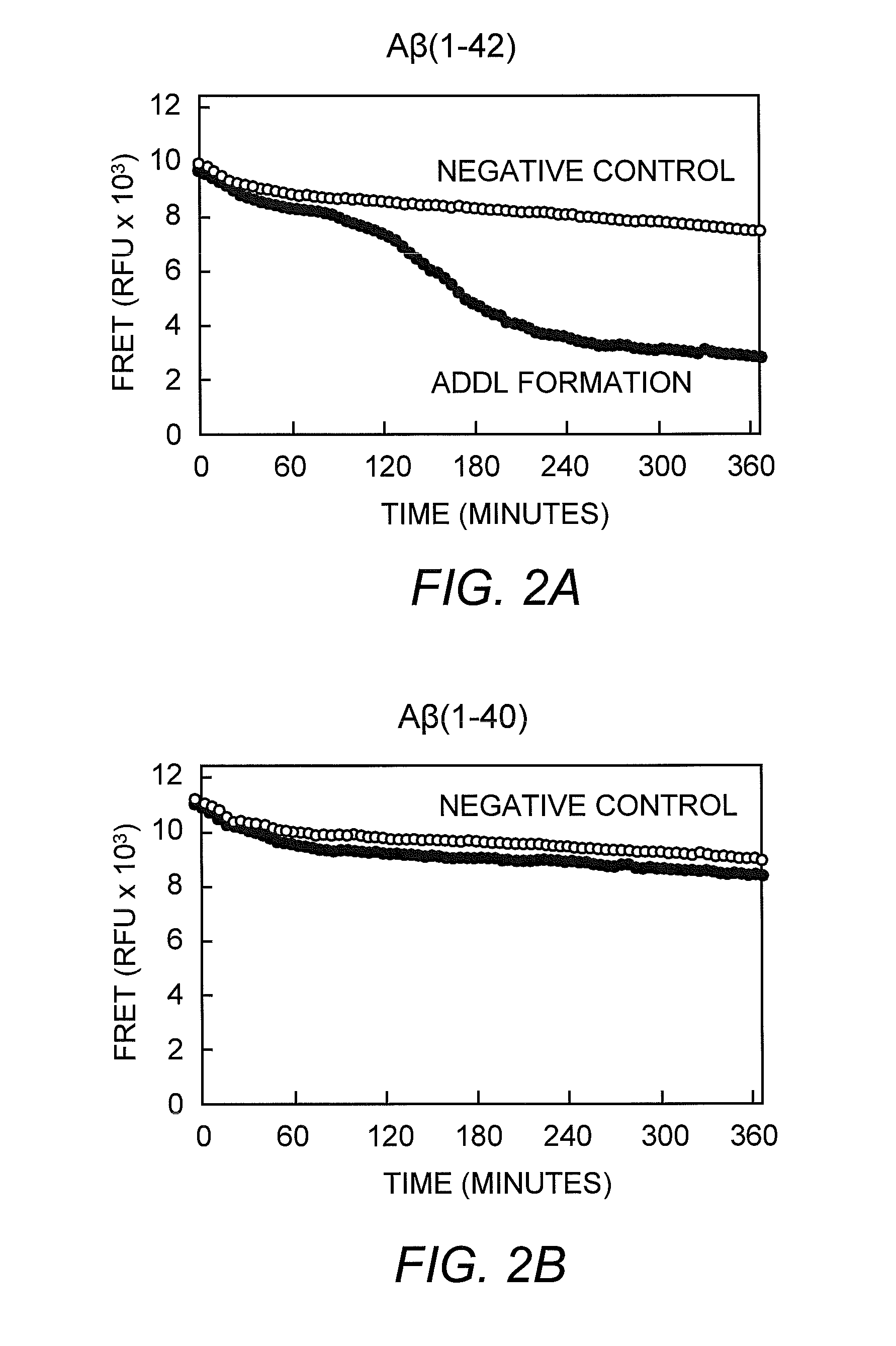Method for detecting oligermization of soluble amyloid beta oligomers
a technology of amyloid beta and oligomer, which is applied in the field of detecting oligermization of soluble amyloid beta oligomers, can solve the problems of significant behavioral deficits in these mi
- Summary
- Abstract
- Description
- Claims
- Application Information
AI Technical Summary
Problems solved by technology
Method used
Image
Examples
example 1
Detection of Soluble Amyloid Beta Oligomers with FRET and FP
[0033]FRET and FP assays are performed in 384-well Corning Non-Binding Surface black, opaque microtiter plates, and the assay buffer consists of 50 mM MOPS-Tris (pH 8.0) with 100 mM MgCl2. The assay volume, containing 0.2 μM FITC-Aβ(1-42) and 0.8 μM Aβ(1-42), is 50 μl and the temperature is 37° C. ADDL assembly is monitored on a Tecan GENios Pro plate reader, exciting at a wavelength of 485 nm and detecting emission at a wavelength of 515 nm. Kinetic traces are collected by recording fluorescence intensity and polarization readings every five minutes over a six-hour time course. Negative control reactions, which do not appreciably assemble into ADDLs during this time, lack MgCl2 but contain all other buffer and peptide components. Positive control reactions contain all buffer components in the absence of added small molecule or antibody reagents. To test for ADDL binding and assembly inhibition, the antibody 6E10 was incuba...
example 2
Detection of Soluble Amyloid Beta Oligomers with TR-FRET and FP
[0034]TR-FRET assays are performed exactly as FRET and FP assays, but with different fluorophore components, concentrations and wavelength readout properties. To detect TR-FRET between FITC and Terbium, 5 nM Terbium-Streptavidin (Tb-SA) is mixed with 25 nM Biotin-Aβ(1-42), 200 nM FITC-Aβ(1-42), and 775 nM Aβ(1-42). Using the same plates, plate reader, assay buffer and assay volume as the FRET and FP assay, ADDL assembly kinetics are detected by exciting at a wavelength of 340 nm and taking the ratio of time-resolved emission at 520 nm to 490 nm using a delay time of 150 μs.
PUM
| Property | Measurement | Unit |
|---|---|---|
| pH | aaaaa | aaaaa |
| temperature | aaaaa | aaaaa |
| fluorescence resonance energy transfer | aaaaa | aaaaa |
Abstract
Description
Claims
Application Information
 Login to View More
Login to View More - R&D
- Intellectual Property
- Life Sciences
- Materials
- Tech Scout
- Unparalleled Data Quality
- Higher Quality Content
- 60% Fewer Hallucinations
Browse by: Latest US Patents, China's latest patents, Technical Efficacy Thesaurus, Application Domain, Technology Topic, Popular Technical Reports.
© 2025 PatSnap. All rights reserved.Legal|Privacy policy|Modern Slavery Act Transparency Statement|Sitemap|About US| Contact US: help@patsnap.com



